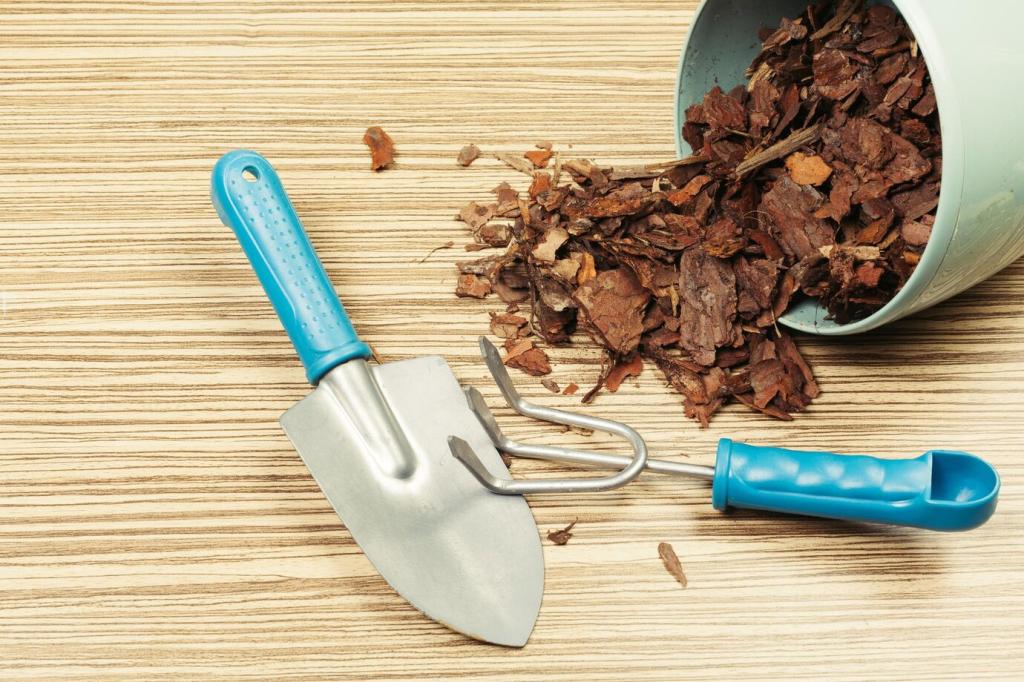Chosen Theme: Choosing the Right Composting Bin for a Balcony
Start with Your Balcony Reality
Grab a tape measure and note footprint, height clearance, and door swing. Tumblers often need rotation space; worm bins stack vertically; bokashi buckets tuck under a bench. Post your dimensions below, and we’ll help recommend a balcony-ready bin size that actually fits.
Start with Your Balcony Reality
A full bin gets heavy with moisture. Check building load recommendations and choose lightweight materials and smaller capacities if limits are tight. Many renters prefer compact plastic units with drip trays to keep weight down while still delivering reliable composting results on small balconies.
Start with Your Balcony Reality
Harsh afternoon sun can overheat worms; constant wind dries materials; rain adds excess moisture. Shade-loving worm bins prefer stable temperatures, while sealed bokashi buckets resist weather swings. Think through your balcony’s conditions to select a bin that performs, not just survives, outdoors.


Comparing Balcony-Friendly Composting Systems
Worm bins are quiet, tidy, and apartment-tested. They turn scraps into rich castings with minimal odor when managed well. However, they dislike extremes of heat or cold. If your balcony swings wildly in temperature, consider insulation or partial indoor placement while still keeping the footprint compact.
Comparing Balcony-Friendly Composting Systems
Bokashi ferments almost all kitchen scraps—including small amounts of meat and dairy—inside an airtight bucket. Odor is pleasantly tangy, not rotten. You’ll need bran and a second stage to finish material in soil or a larger bin. For tiny balconies, bokashi’s clean, sealed design is a strong contender.
Odor and Pest Control Shape the Right Choice

Seals, Gaskets, and Filters
Look for lids with firm latches and rubber gaskets to keep scents inside. Some units add replaceable charcoal filters for extra odor control. If your balcony shares a wall with neighbors, prioritize airtight designs. Tell us how close your neighbors are, and we’ll help dial in the right sealing.

Leachate and Drainage Control
Worm bins and bokashi systems can produce liquid. A spigot or catch tray helps prevent sticky messes and slip hazards. Choose a bin with easy-to-empty drainage and a stable base. Keep a small container handy for leachate to avoid spills, especially on narrow or slatted balcony floors.

Pest-Proof Features
Elevated stands, metal mesh vents, and tight-fitting lids deter insects and rodents. Avoid loose fabric covers outdoors. If your area has raccoons or curious birds, pick a bin with locking hardware. Share your local wildlife encounters below to get bin recommendations built for your reality.
What You Compost Determines the Best Bin
If you cook lots of veggies, a worm bin thrives. If you regularly include meat or dairy, bokashi is safer and cleaner on a balcony. Citrus peels and spicy scraps can stress worms, so plan accordingly. Think about your menu, then choose a bin that matches your weekly plate and pantry.
Track a typical week of scraps to estimate capacity needs. Compact worm bins suit one to two people; small tumblers help when volume spikes. If space is tight, rotate two bokashi buckets: fill one while the other ferments. Comment your weekly scrap volume for a tailored capacity suggestion.
Balcony composting needs browns: shredded mail, paper towels, dry leaves, or coco coir. If storage is limited, pick a bin forgiving of moisture swings, or keep a small sealed tub of browns nearby. The easier your carbon is to grab, the smoother your day-to-day composting workflow will be.


A Balcony Story: The 40 cm Footprint That Worked
Nina measured a tight 40 cm corner by her cafe table. A tumbler felt too bulky, so she picked a stacked worm bin with a gasketed lid. She left a friendly note to neighbors about odor control and started with frozen-then-thawed scraps and shredded mail as bedding.
Warm afternoons spiked temperatures, so Nina slid the bin into afternoon shade and added a coir mat on the stand. She fed smaller amounts more often, and odors vanished. A tiny catch tray under the spigot saved her deck from drips. Her neighbor later asked for setup tips.
Nina harvested her first tray of castings and dressed two balcony planters. Basil exploded. She realized the winning factor wasn’t the fanciest bin—it was fit. Now she advises friends: measure your balcony, observe your climate, and choose the simplest system you’ll use consistently.
Regulations, Neighbors, and Aesthetics
Know Your Building’s Rules
Some rentals limit liquids, storage, or balcony enclosures. Choose sealed systems with drip control and tidy footprints to stay compliant. If in doubt, share your bin’s specs and odor controls with management for peace of mind. Ask your building board early to avoid later headaches.
Neighbor-Friendly Choices
Prioritize sealed lids, subtle colors, and quiet operation. Place bins away from shared rails and doors. Offer herbs grown with your compost as a neighborly icebreaker. Comment how close your balcony sits to others, and we’ll suggest designs that keep composting invisible and appreciated.
Design That Blends In
Pick a bin color that matches planters or furniture. Tuck it behind a trellis or herb rack for a clean view. Compact worm bins and bokashi buckets integrate easily into cozy spaces. Share a balcony photo and we’ll help you place your bin so it disappears into your green corner.
